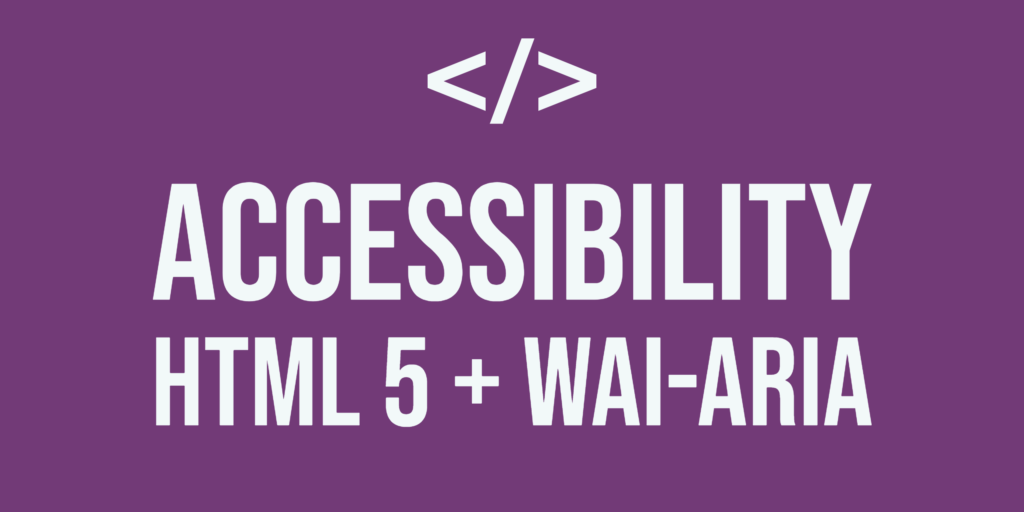How HTML and WAI-ARIA enable accessibility

To create a fully enriched and accessible file, publishers must supplement HTML with the detailed structural semantics in the WAI-ARIA specification
In my last post, we covered the importance of alt text and image descriptions for accessible publications. While images are a crucial aspect, they are only one piece of the larger accessibility puzzle.
Equally important is using the appropriate HTML markup to drive accessibility. There is a common misconception that just by using HTML 5 and EPUB 3, your publication will automatically be accessible, but this just isn’t true.
HTML 5 and EPUB files are the proper format for accessibility, but the underlying semantic tagging has to enable screen readers and other assistive technology to interact with the publication correctly. That is where HTML and WAI-ARIA come into play.
HTML 5 will get you halfway there
The standard structural semantics inherent in HTML (sections, headings, paragraphs, image tags, and image descriptions) are sufficient for providing a logical reading order for screen readers to follow.
Fortunately, most publishing service providers already use proper HTML and can easily integrate it in your existing processes with minimal additional effort if they are not already.
WAI-ARIA framework drives true accessibility
While basic HTML lays the foundation for accessibility, you need one more layer in your semantic tagging for publications to be truly accessible: Web Accessibility Initiative-Accessible Rich Internet Applications or WAI-ARIA.
WAI-ARIA provides a detailed structural framework for identifying specific attributes or “roles” of content within a publication. Roles tag or describe structures within an EPUB like menus, headings, tables, graphics, and other detailed components on a page.
With the WAI-ARIA specification, people using screen readers and other assistive technology can navigate within a digital publication and interpret its content in a helpful manner.
Don’t forget the EPUB Navigation Document
In addition to correct semantic tagging, accessible EPUBs must have an EPUB Navigation Document.
While HTML markup supports reading order within a single document, an EPUB may contain multiple documents. The EPUB Navigation Document enables screen readers to navigate between and within the different chapters or resources of an EPUB.
Fortunately, incorporating an EPUB Navigation Document is not complicated. Publications have to contain only three navigation elements to function appropriately for accessibility: TOC, landmarks, and page-list.
<NAV> ELEMENTS

Next steps: Test and augment your HTML
If you are unclear on how accessible your current publishing process is, the best place to start is by opening one of your EPUBs and reviewing the markup.
Do you see a lot of <div> or are sections tagged <header> <footer><article><section> etc.? Are role attributes apparent role=”<ROLE TYPE>“?
If you are already using proper HTML markup, you are one step closer to accessibility.
If not, there are a growing number of resources and experts driven to help publishers produce accessible publications.
Keep in mind, publishers don’t necessarily have to do the detailed markup themselves. Publishing service providers already work in HTML and are developing expertise in accessibility and WAI-ARIA to help publishers navigate this new requirement.
Interested in creating accessible publications? Start a conversation with Apex. We can help you evaluate your workflow and augment it in the new accessibility landscape.